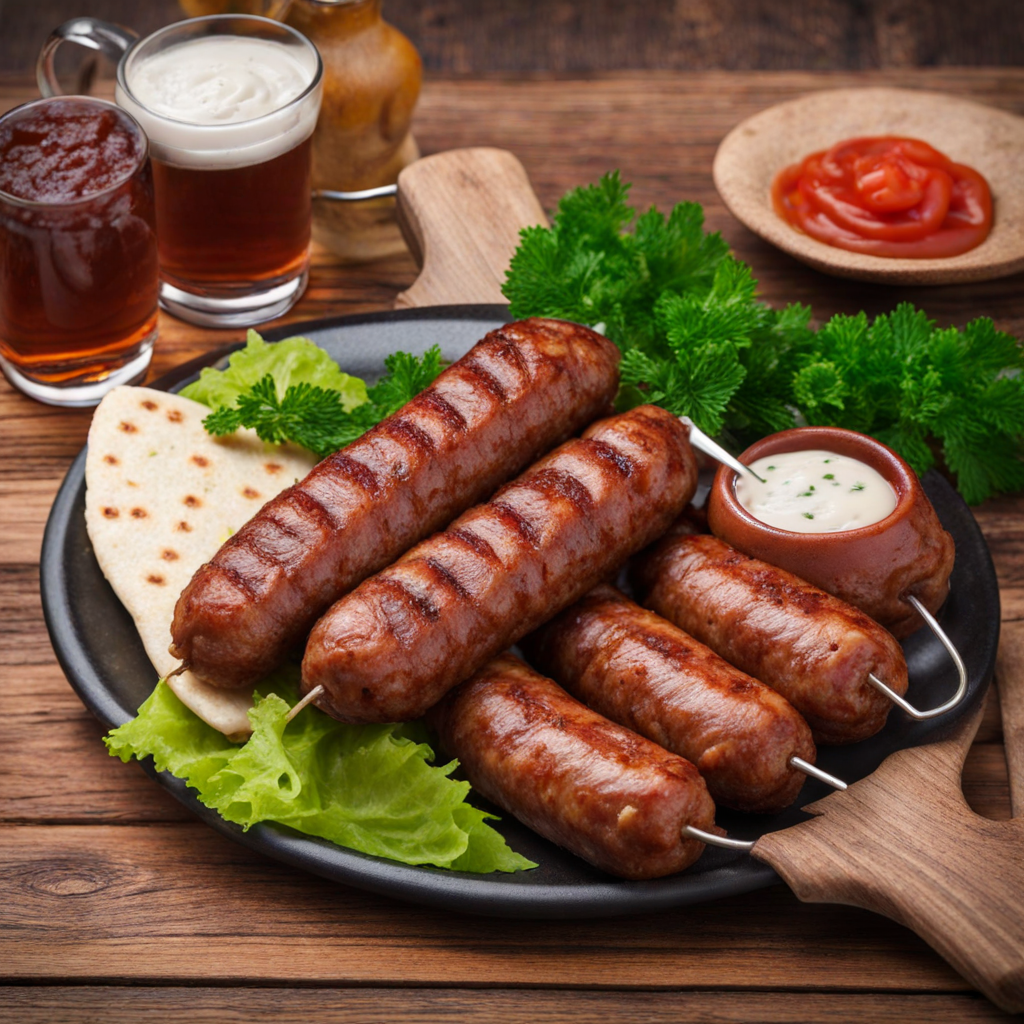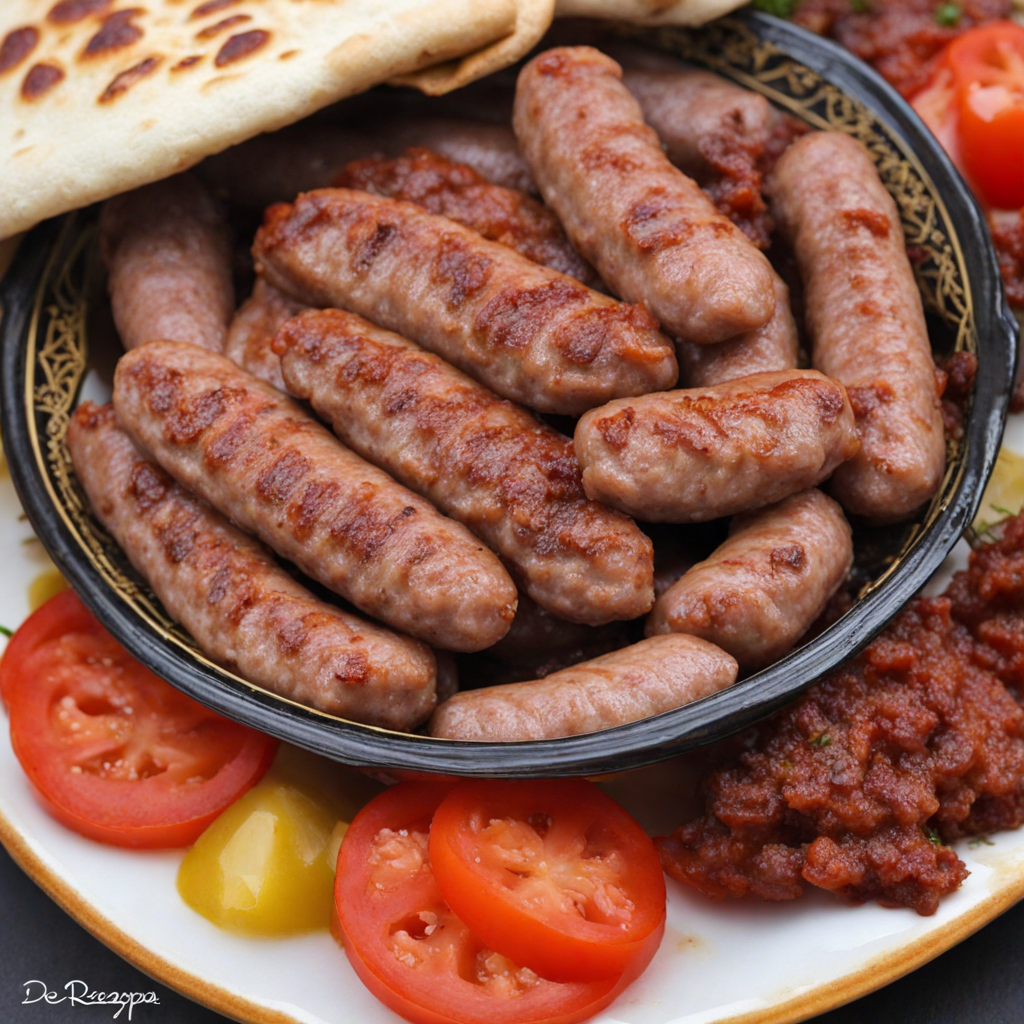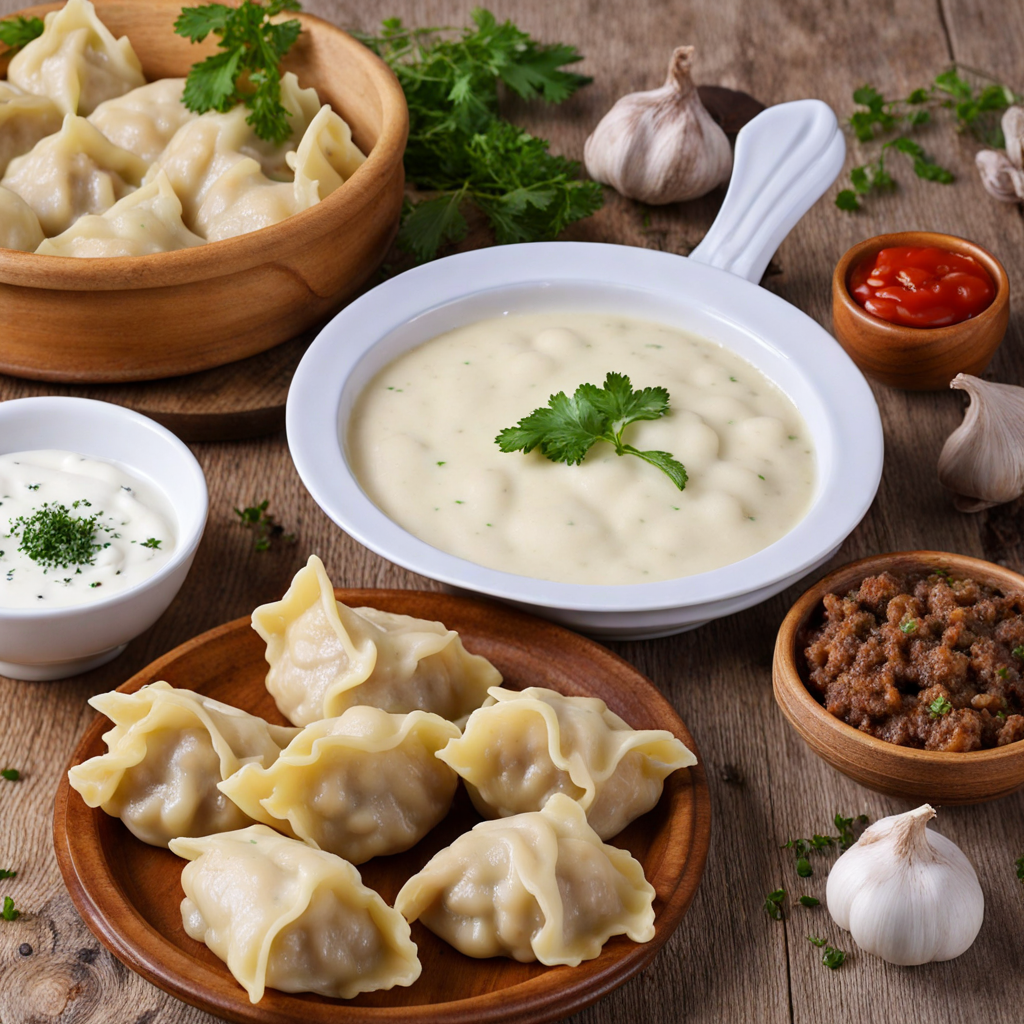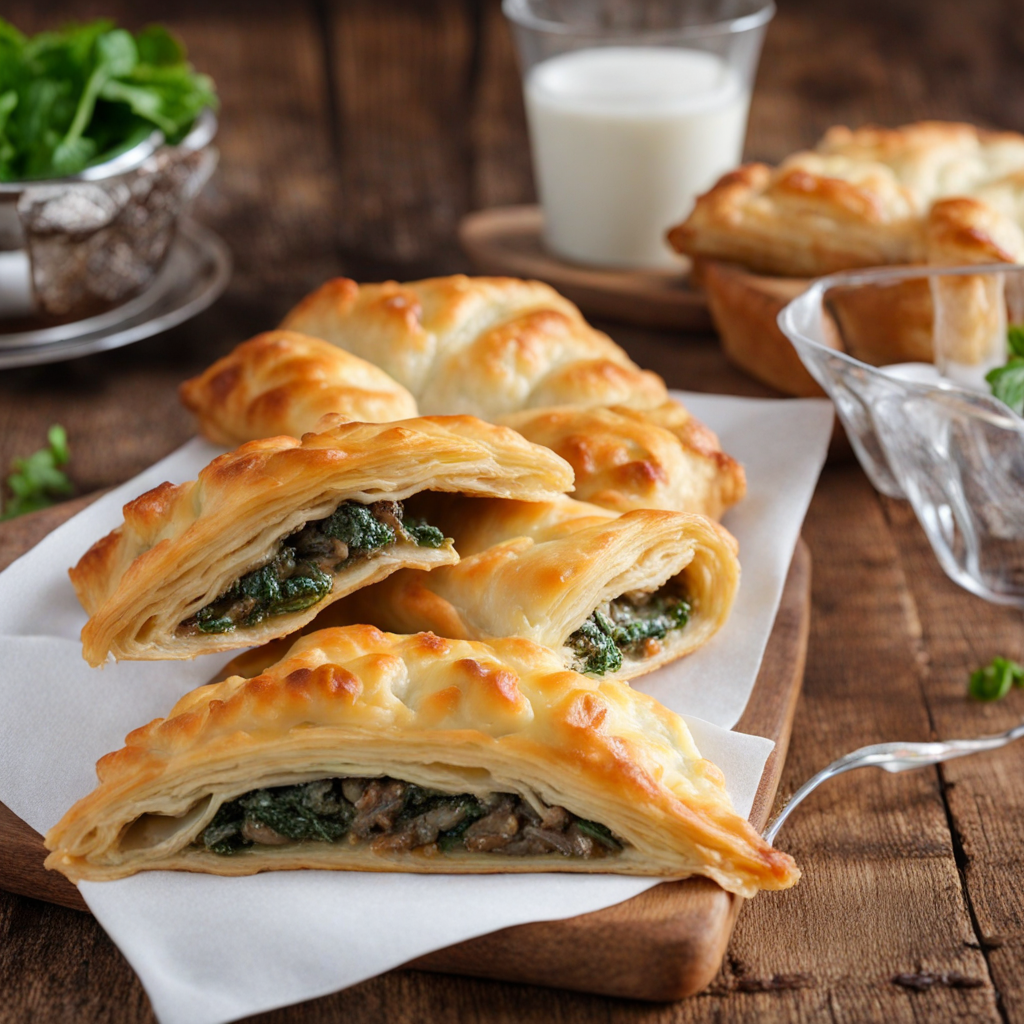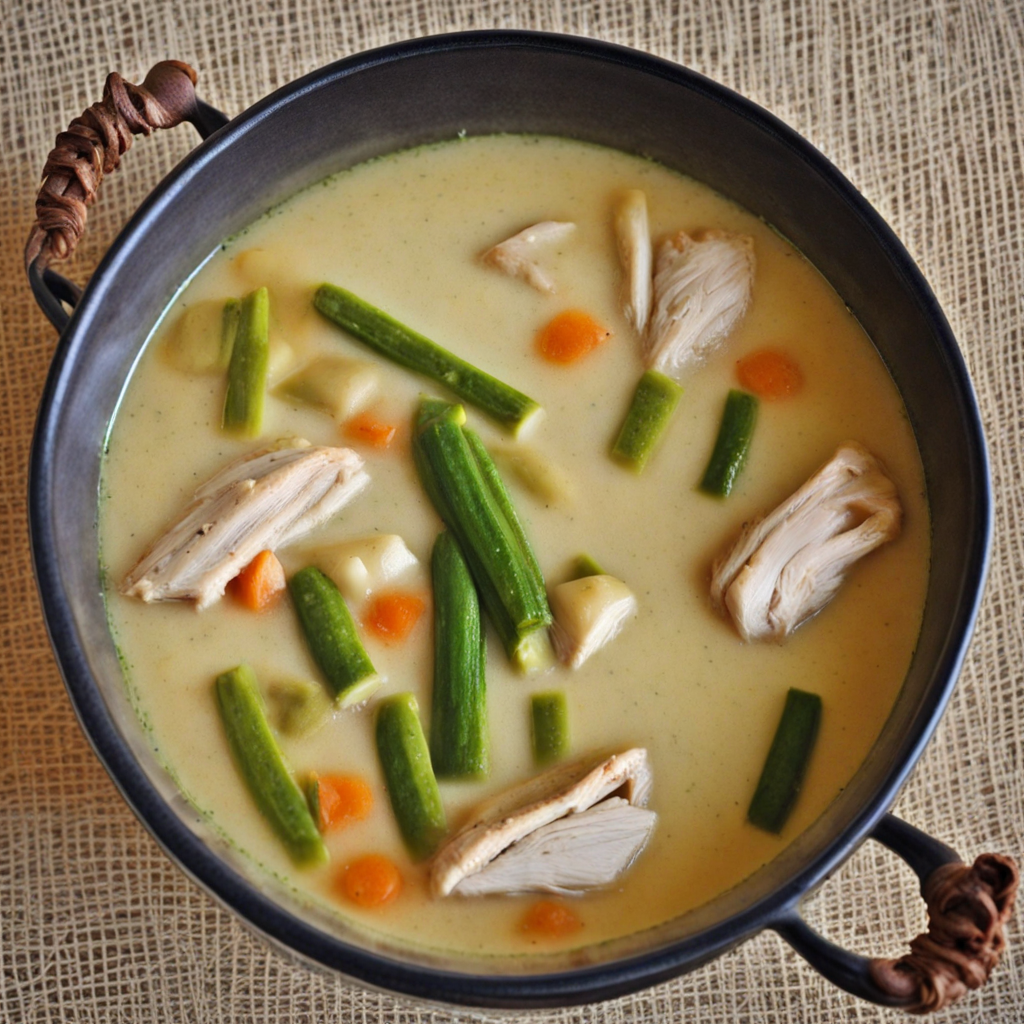Ćevapi
Ćevapi, a beloved dish hailing from Bosnia and Herzegovina, is a succulent grilled meat delicacy that is a must-try for those seeking new culinary experiences. These small, finger-sized sausages are typically made from a blend of minced beef, lamb, or pork, seasoned with a harmonious mix of spices and herbs. The result is a flavorful meat that is grilled to perfection, offering a crispy exterior while remaining juicy and tender on the inside. Often served in a flatbread called somun, Ćevapi are the perfect handheld treat that allows you to savor their robust taste in every bite. Accompanying Ćevapi are traditional sides that elevate the dish even further. A generous helping of chopped onions adds a sharp crunch, while a dollop of ajvar—a roasted red pepper and eggplant spread—introduces a smoky sweetness that enhances the overall flavor profile. For those who enjoy a bit of heat, a sprinkle of crushed red pepper or a side of spicy sauce can provide an extra kick, making each bite a delightful adventure. It's common to enjoy Ćevapi with a side of fresh salad or yogurt, which balances the richness of the meat and adds a refreshing contrast. What makes Ćevapi particularly special is not just its taste, but also its cultural significance. This dish is deeply rooted in the culinary traditions of the Balkans, often enjoyed during gatherings, celebrations, and barbecues. The communal aspect of sharing Ćevapi with friends and family creates a warm, inviting atmosphere that enhances the overall dining experience. Whether you're discovering it at a local restaurant or trying your hand at making it at home, Ćevapi promises a flavorful journey that captures the essence of Bosnian hospitality and the rich tapestry of its gastronomy.
How It Became This Dish
The Story of Ćevapi: A Culinary Icon of Bosnia and Herzegovina #### Origins Ćevapi, a beloved dish in Bosnia and Herzegovina, has a rich history that reflects the region's complex culinary traditions and cultural exchanges. The name "ćevapi" is derived from the Turkish word "kebap," which denotes grilled meat. This indicates the dish's connections to the Ottoman Empire, which ruled over the Balkans for several centuries. While the precise origins of ćevapi are difficult to pinpoint, it is widely accepted that they emerged during the Ottoman period, influenced by both local and Turkish cooking methods. Traditionally, ćevapi are small, finger-sized sausages made from a mixture of minced meats, typically beef, lamb, or pork, seasoned with various spices, garlic, and sometimes onion. The meat is shaped into small, cylindrical forms and grilled to perfection over an open flame, imparting a smoky flavor that is central to the dish’s appeal. #### Cultural Significance In Bosnia and Herzegovina, ćevapi are more than just a meal; they are a symbol of national identity and pride. The dish transcends class and social barriers, enjoyed by everyone from street vendors to fine dining establishments. Eating ćevapi is often a communal experience, typically served with somun (a type of flatbread), chopped onions, and red pepper relish known as ajvar. This combination creates a satisfying meal that is both hearty and flavorful. The dish's significance is further underscored by the cultural rituals surrounding its consumption. Family gatherings, celebrations, and social events often feature ćevapi as the centerpiece, bringing people together to share stories, laughter, and good food. In many ways, the act of grilling ćevapi has become a cherished tradition, often associated with outdoor gatherings, where friends and family come together to celebrate life's moments. #### Development Over Time As the years passed, ćevapi evolved, absorbing influences from different cultures and regions. The post-Ottoman era saw the emergence of various regional variations, with each community adding its unique twist to the dish. In Bosnia, ćevapi became a staple food, often associated with the working class due to its affordability and ease of preparation. Street vendors and small eateries, known as "ćevabdžinice," sprang up, serving delicious ćevapi to locals and tourists alike. In the 20th century, particularly during the Yugoslav era, ćevapi gained popularity beyond Bosnia and Herzegovina, becoming a staple in the broader Balkan cuisine. Each republic of the former Yugoslavia developed its own version, with slight variations in spices, meat mixtures, and preparation techniques. In places like Serbia, Montenegro, and Croatia, ćevapi are similarly cherished but may be served with different accompaniments or cooked using distinct methods. The dish's popularity surged in the diaspora as communities of Bosnians, Serbs, and Croats settled in various countries across Europe and North America. In these new environments, ćevapi became a way for immigrants to hold onto their cultural identity, serving as a culinary bridge to their homeland. Food festivals, cultural events, and restaurants dedicated to Balkan cuisine helped to introduce ćevapi to a wider audience, allowing it to gain recognition beyond its regional roots. #### Modern Times and Global Recognition In recent years, ćevapi have entered the global culinary scene, embraced by food enthusiasts and chefs eager to explore the flavors of Eastern Europe. The rise of food trucks and casual dining establishments has further popularized the dish, making it accessible to a broader audience. Many modern interpretations maintain the core components of traditional ćevapi while experimenting with flavors and presentation. Today, you can find ćevapi served in various styles, from gourmet versions topped with artisanal sauces and garnishes to classic street food offerings that stay true to their roots. The dish's adaptability ensures that it remains relevant in contemporary cuisine, while still honoring its historical significance. Food tourism also plays a role in the dish's popularity. Travelers to Bosnia and Herzegovina often seek out authentic culinary experiences, with ćevapi being a must-try item. Local restaurants and eateries take pride in their recipes, often boasting about their unique blends of spices or the quality of the meat they use. #### Conclusion Ćevapi is more than a simple grilled meat dish; it embodies the spirit of Bosnia and Herzegovina, representing a rich tapestry of history, culture, and community. From its Ottoman roots to its modern interpretations, the dish has evolved while remaining a cherished staple in Bosnian households and beyond. Whether enjoyed at a bustling ćevabdžinica in Sarajevo or at a backyard barbecue, ćevapi continue to bring people together, fostering connections and celebrating the shared love of food. As this iconic dish moves forward into the global culinary landscape, it serves as a reminder of the resilience of cultural traditions and the power of food to unite people from different backgrounds. In every bite of ćevapi, the flavors of history, culture, and shared experiences come alive, making it a true culinary treasure of Bosnia and Herzegovina.
You may like
Discover local flavors from Bosnia And Herzegovina


